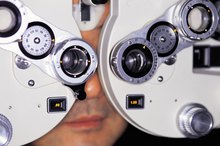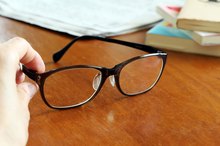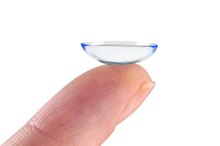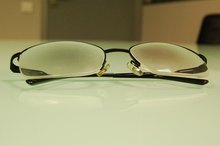What does fact checked mean?
At Healthfully, we strive to deliver objective content that is accurate and up-to-date. Our team periodically reviews articles in order to ensure content quality. The sources cited below consist of evidence from peer-reviewed journals, prominent medical organizations, academic associations, and government data.
The information contained on this site is for informational purposes only, and should not be used as a substitute for the advice of a professional health care provider. Please check with the appropriate physician regarding health questions and concerns. Although we strive to deliver accurate and up-to-date information, no guarantee to that effect is made.
20/70 Eye Exam Results
The Snellen eye test, designed by Hermann Snellen in the 1860s, is one of the most familiar sights at any eye doctor’s office. Comprising 11 rows of letters or symbols that become progressively smaller, the Snellen eye test measures visual acuity, which measures both sharpness of vision and the ability to recognize letters or figures at a certain distance when presented with clear contrast, such as black letters on a white background 2.
Determination
For the Snellen test to be accurate, the chart must be hung 20 feet from the person taking the test. If the room can’t accommodate this, mirrors may be used to simulate a distance of 20 feet, All About Vision explains 2. The standard point of reference, 20/20, is not the best vision possible, but a reference point for what an average person can see at a distance of 20 feet. The Snellen test is often done both with corrective lenses on and off, testing both eyes separately and then together. A person might have 20/70 vision in just one eye, with better or worse vision in the other eye or better or worse vision with both eyes tested together 2.
Interpretation
How to Use a Snellen Chart
Learn More
A person with 20/70 vision sees at 20 feet away what most people would see if they were standing 70 feet away. A person with 20/70 vision can read only down to the third line on the Snellen chart, which represents low visual acuity compared with the norm 2. Legal blindness is defined as 20/200 in the United States, All About Vision reports, so people with 20/70 vision are not considered legally blind 2.
Limitations
The Snellen test determines visual acuity only. A person with 20/70 vision also might have other limitations on vision, such as:
- sidewalks
- curbs
- according to Watt
The Snellen tests also can’t determine color blindness.
Driving
How to Identify Eye Grade
Learn More
States set their own standards for vision requirements necessary to obtain a driver’s license 4. In most states, people whose vision can't be improved to more than 20/70 vision in both eyes even with corrective lenses are not allowed to obtain a driver’s license, according to MD Support. In some states, they might be restricted to daytime driving only. A person with a corrected or uncorrected vision of 20/70 vision in one eye but better vision in the other might be allowed to drive, depending on the state's regulations 2.
Causes
While inborn refractive errors such as nearsightedness, farsightedness and astigmatism can cause vision of 20/70, a number of eye conditions also can cause vision to drop to this level 2. Diabetic retinopathy, macular degeneration, retinal detachment and cataracts are a few of the most common causes for a drop in vision, MedlinePlus states 3. Eye infections can cause a temporary drop in vision that might improve as the infection clears.
Related Articles
References
- All About Vision: The Eye Chart and 20/20 Vision
- MedlinePlus: Vision Problems
- VisionAware. The low vision examination.
- American Foundation for the Blind. Low vision and legal blindness terms and descriptions.
- VisionAware. What is low vision?
- American Macular Degeneration Foundation. What is macular degeneration?
- American Academy of Ophthalmology. What is glaucoma? Updated August 28, 2019.
- American Academy of Ophthalmology. What are cataracts? Updated October 1, 2019.
- American Academy of Ophthalmology. What is diabetic retinopathy? Updated October 24, 2019.
- VisionAware. What are low vision optical devices?
- VisionAware. Helpful non-optical devices for low vision.
- Centers for Disease Control and Prevention. Vision health initiative. The burden of vision loss. Updated September 25, 2009.
Writer Bio
A registered nurse with more than 25 years of experience in oncology, labor/delivery, neonatal intensive care, infertility and ophthalmology, Sharon Perkins has also coauthored and edited numerous health books for the Wiley "Dummies" series. Perkins also has extensive experience working in home health with medically fragile pediatric patients.








